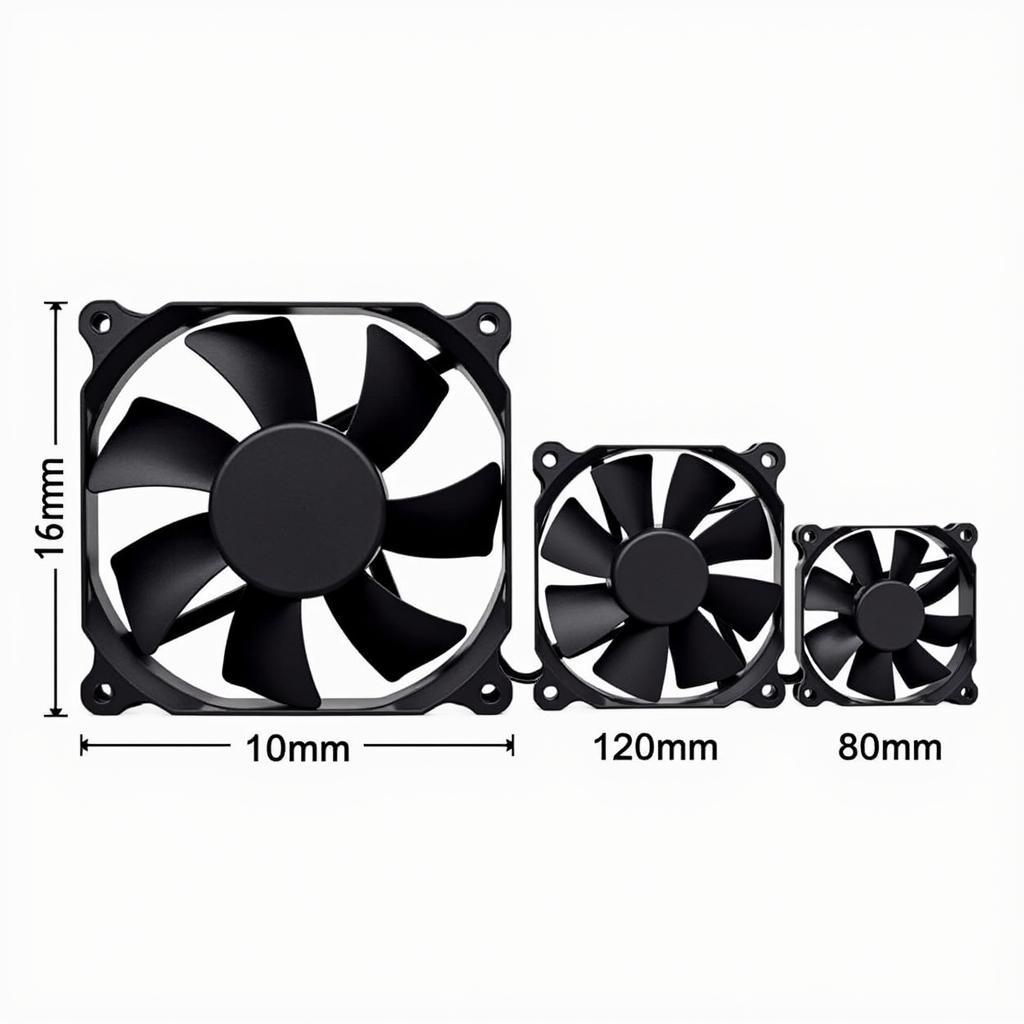A 140mm PC fan plays a crucial role in maintaining optimal temperatures inside your computer case. This size fan is a popular choice among PC enthusiasts and casual users alike, offering a balance of airflow and noise levels. But what exactly makes a 140mm fan so effective, and what should you consider when choosing one?
The Importance of Airflow and Cooling
 Airflow generated by a 140mm fan
Airflow generated by a 140mm fan
Before diving into the specifics of 140mm fans, it’s essential to understand the importance of airflow and cooling in a PC system. Modern computer components, particularly the CPU and GPU, generate significant heat when operating. Without adequate cooling, this heat can lead to performance throttling, system instability, and even permanent hardware damage.
PC fans mitigate these risks by creating airflow within the case. This airflow helps dissipate the heat generated by components, keeping temperatures within a safe operating range. Effective cooling ensures optimal performance, stability, and longevity for your valuable hardware.
Why Choose a 140mm Fan?
 140mm fan compared to other sizes
140mm fan compared to other sizes
PC fans come in various sizes, with 120mm and 140mm being the most common. While 120mm fans are generally sufficient for basic systems, 140mm fans offer several advantages:
-
Increased Airflow: Due to their larger surface area, 140mm fans can move a greater volume of air at the same RPM (rotations per minute) compared to smaller fans. This increased airflow translates to more efficient heat dissipation.
-
Lower Noise Levels: To achieve the same airflow as a 140mm fan, a smaller fan would need to spin at a higher RPM, resulting in more noise. 140mm fans can operate at lower RPMs while still providing ample airflow, leading to quieter operation.
-
Improved Static Pressure: Static pressure refers to a fan’s ability to push air through restricted spaces, such as those found in heatsinks and radiators. 140mm fans generally offer better static pressure than 120mm fans, making them ideal for use with CPU coolers and liquid cooling systems.
Factors to Consider When Choosing a 140mm Fan
 Different types of 140mm PC fans
Different types of 140mm PC fans
Not all 140mm fans are created equal. Consider the following factors when making your selection:
-
Airflow (CFM): Measured in cubic feet per minute (CFM), this metric indicates the volume of air a fan can move. Higher CFM generally means better cooling performance.
-
Static Pressure (mmH2O): This measurement, expressed in millimeters of water column (mmH2O), reflects a fan’s ability to push air through resistance. Higher static pressure is crucial for CPU coolers and radiators.
-
Noise Levels (dBA): Fans produce noise, measured in decibels (dBA). Look for fans with low dBA ratings for quieter operation.
-
Bearing Type: The bearing type affects a fan’s lifespan, noise levels, and performance. Common types include sleeve bearings, ball bearings, and fluid dynamic bearings (FDB), with FDB generally offering the best balance of performance and longevity.
-
Features: Some fans come with additional features like PWM (Pulse Width Modulation) for precise speed control, RGB lighting for customization, and anti-vibration pads for noise reduction.
Conclusion
A 140mm PC fan is a valuable asset for maintaining optimal temperatures within your computer system. Its larger size allows for increased airflow and quieter operation compared to smaller fans, making it an ideal choice for both performance enthusiasts and those seeking a quieter computing experience. By understanding the factors discussed above, you can confidently choose the best 140mm fan to keep your system cool and running smoothly for years to come.


